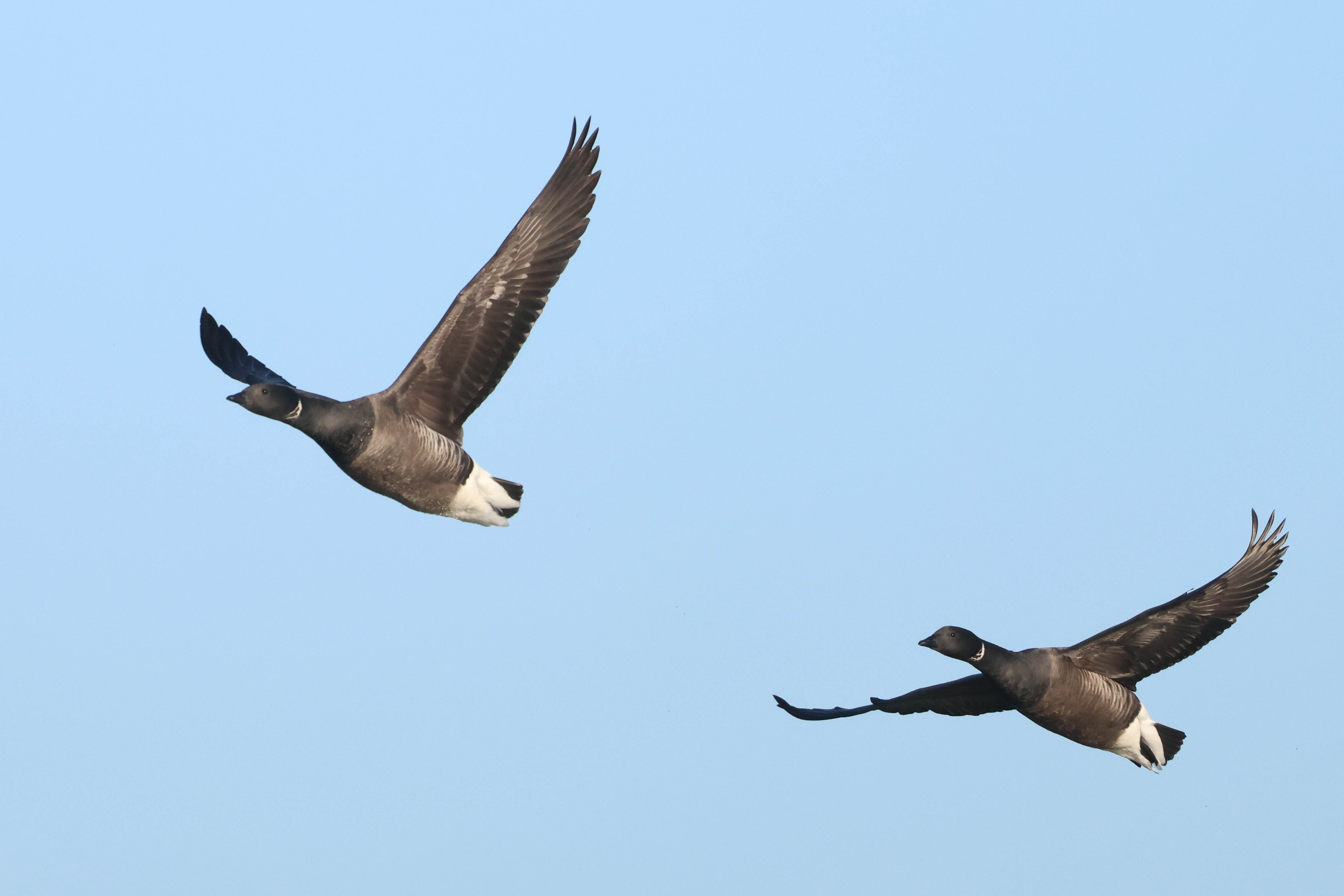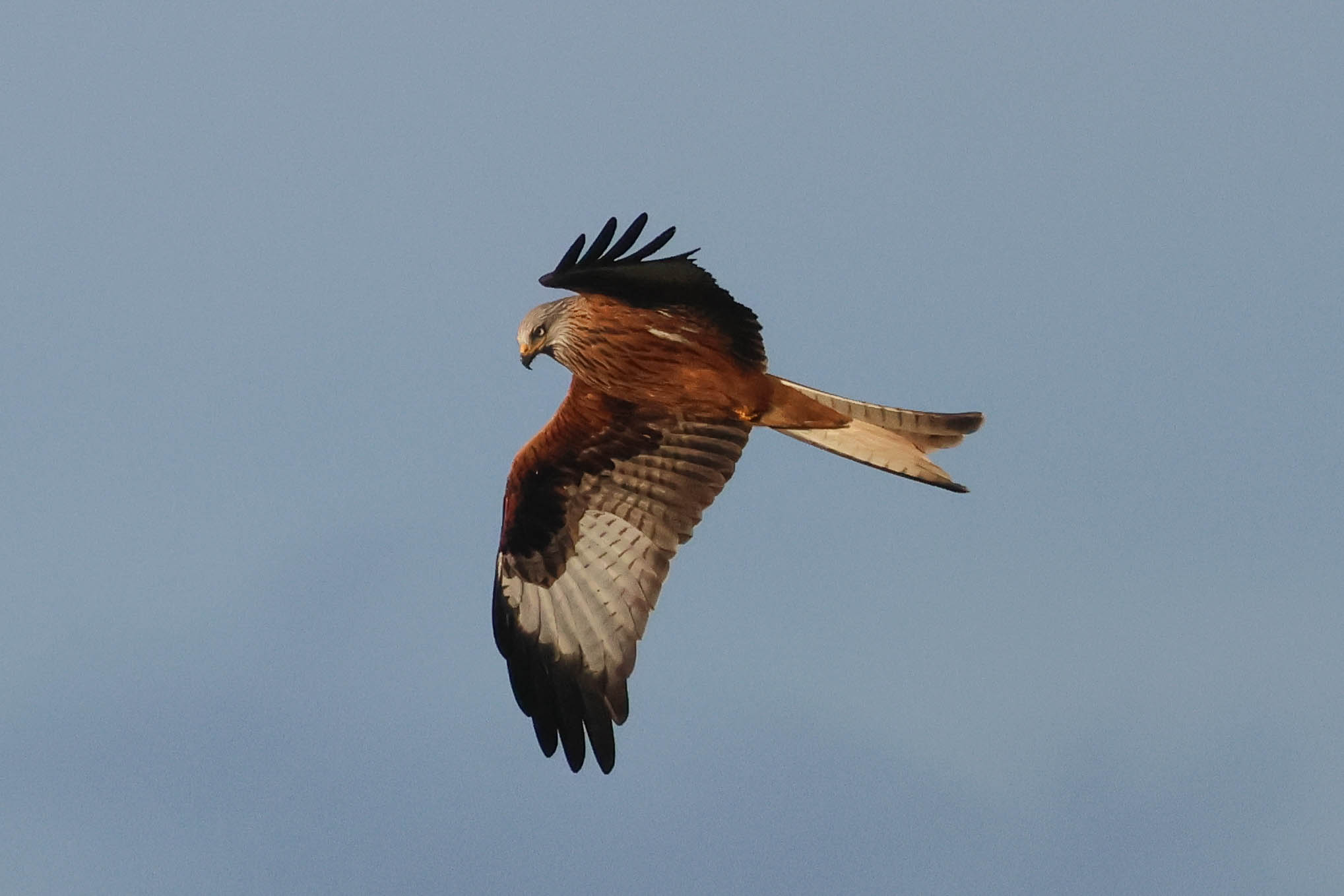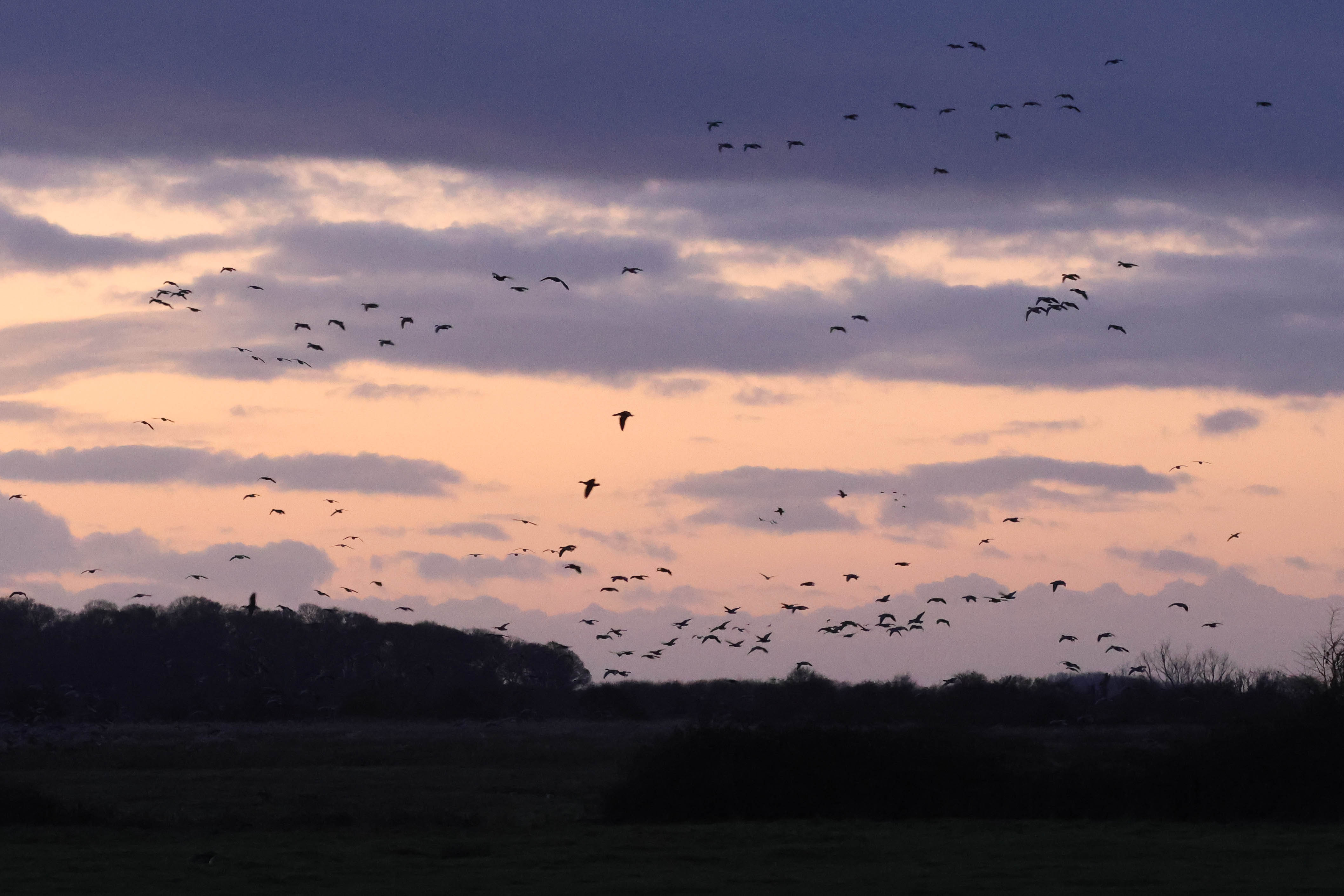A Private Tour today in North Norfolk for some visitors from the USA. We had originally been scheduled to go out yesterday but as the forecast was for rain we switched it to today. The weather was much better – bright winter sunshine, although there was still a stiff breeze blowing.
We met in Old Hunstanton and headed first for Titchwell. As we got out of the minibus, an over-wintering Chiffchaff flicked around in the hedge by the car park. Behind the Visitor Centre we found a large flock of Goldfinches in the alders and we stopped to admire some of our commoner birds – some smart Chaffinches, Greenfinch and a brief Brambling, Dunnock and Wren at close quarters, some very tame Robins and a couple of Blue Tits on the roof.
The ditches by the main path are still rather dry so far this winter, but we did still manage to find a Water Rail feeding in the water in the bottom of one of them, giving us some great close-up views of this often very secretive species.

It was rather windy once we got out of the trees. A Marsh Harrier was chased by a Carrion Crow out over Thornham Marsh and a Red Kite was perched in the dead trees at the back of the reedbed. A steady succession of small flocks of Pink-footed Geese flew west overhead calling. Out on the saltmarsh, we stopped to look at (Eurasian) Curlew, Common Redshank and a single Grey Plover (known as Black-bellied Plover in North America) out on the saltmarsh, with one or two Little Egrets and a Chinese Water Deer further back and a (Common) Kestrel sheltering from the wind on the old concrete bunker.
We headed for the shelter of Island Hide. (Northern) Lapwings are always stunning birds so we got the scope on one of those first for a closer look. There were a few Black-tailed Godwits mostly asleep on the same island. Several (European) Golden Plover were on the bund behind and a single (Common) Ringed Plover on the next pool beyond. The group of wintering (Pied) Avocets were sheltering behind one of the islands further back, not the best view from this side. A Common Snipe played hide and seek in and out of the vegetation on the island closest to the hide.

There was a nice selection of wildfowl on the Freshmarsh too. The noisy flocks of Brent Geese on the water when we arrived gradually drifted off back to the saltmarsh to feed. There were plenty of (Eurasian) Teal, (Northern) Shoveler and Mallard, three Gadwall a couple of (Common) Shelduck and a few (Northern) Pintail. A single female Goldeneye was diving at the back and three Tufted Ducks worked their way round the edge. A lone juvenile Whooper Swan dropped in with the Greylag Geese on the water but stayed when the geese flew off again.

We made our way round to Parrinder Hide now. A quick look from the north side provided some great views of Common Redshank and Grey Plover. There were lots more ducks, including several (Eurasian) Wigeon on the Freshmarsh from the southern side of the hide. A few Dunlin were picking around the edges of the far compartment and we had a better view of the Avocets from here. The Long-billed Dowitcher had not put in an appearance here this morning, but unusually and unlike most of the other people here today we were not too worried about seeing it, as they are much commoner in the USA! We did manage to pick out a Spotted Redshank on the back of one of the islands from here, and admire its needle-fine bill.
With so many distractions here for us this morning it was already time for lunch, and with high tide out on the beach now, we decided to head back to use the facilities and get a welcome hot coffee. After lunch, we made our way east along the coast road to Holkham. There were lots of Egyptian Geese and Lapwings in the fields as we passed by.
We stopped overlooking the grazing marshes first. It didn’t take too long to pick out a small group of White-fronted Geese mixed in with the Greylags. A larger flock of Barnacle Geese were feeding in the distance over by the pines. Having seen flocks overhead earlier it was nice to get the scope on a Pink-footed Goose on the ground now for a better look. A couple of Great White Egrets stalking round the marshes were possibly less of interest today than a Grey Heron on the edge of one of the ditches.
There was a good selection of raptors here – several Red Kites including one which drifted across in front of us glowing rich rusty red in the afternoon sunshine, a couple of Common Buzzards one on the ground and one on a bush, a distant Marsh Harrier quartering and a Common Kestrel which came in to hover right in front of us. A Goldcrest which flew over our heads and into the hedge the other side unfortunately did not hang around.

It was very busy at Lady Anne’s Drive but we still managed to park at the north end. A couple of Lapwing and a Curlew were out on the marshes close to the fence, along with lots of Wigeon. From the top end, we looked down over the reeds at some dark lumps moving in the grass which were the resident small covey of Grey Partridge.

The sun was already starting to drop in the sky and disappeared behind some low clouds on the horizon now too. We made our way out onto the saltmarsh and walked east towards the cordon. There were fewer birds out here today, possibly given the disturbance from all the people and dogs, but we did see a flock of Linnets whirling round the back of the saltmarsh. Two Red Kites hung in the air overhead.
Another birder walking back the other way told us that the Shorelarks (aka Horned Larks) had just flown off out to the beach but as we were speaking we saw them fly back in way off in the distance and when we got to the cordon we could see them feeding on the sand right down at the far end. We walked most of the way down and got them in the scope – nice enough views, we could see their yellow faces and black bandit masks. But then they took off and flew straight towards us, landing much closer, and then they proceeded to pick their way right past us. Great views, even if the light was going now.


It was getting dark by the time we got back to Lady Anne’s Drive, but there was one final treat in store. As we walked back to the minibus, we heard a cacophony of Pink-footed Geese calling and looked over to see several thousand flying in against the setting sun. We stood and watched as they dropped down onto the grazing marshes, a wonderful sight and a great way to end the day.

















